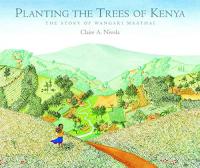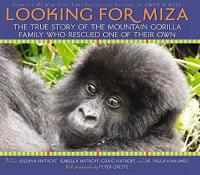Through Questioning the Author (often referred to as QtA), students come to understand that they share responsibility for comprehending a text with the text’s author. Of course, it’s the reader’s job to understand the text, but at the same time, it’s the author’s job to write a text the reader can understand! In QtA, students engage actively with the reading, stopping to ask questions of the author and the text as they read. Through forming questions like “What is the author’s message?” “Does the author explain this clearly?” and “How does this connect to what the author said earlier?” students learn more about the text.
Why use questioning the author?
- It engages students in the reading and helps to solidify their understanding of a text.
- It promotes self-monitoring and gives students a structured way to identify and fill gaps in comprehension.
- It empowers students as readers by placing them on a more equal footing with the authors of the texts they read.
- It helps students think critically about the choices authors make and, ideally, helps them more thoughtfully critique and revise their own writing..
Key Information
Focus
When To Use This Strategy
Appropriate Group Size
How to use questioning the author
As described by Beck & McKeown (2002), QtA consists of three essential elements:
Texts
The ideal text for a QtA lesson is an interesting passage that can spur conversation. The lesson begins with the assumption that the text being read is, in essence, the written-down thoughts of an individual author. Knowing that authors may or may not be 100% successful in communicating to readers what they hope to communicate frees up students to “grapple” with text as they read. The students and teacher work through the text section by section, stopping at predetermined points. The size of the sections will depend on the complexity of the text and on students’ familiarity with the QtA process.
Queries
For each section of text, the teacher and students work together to answer a series of standard questions (see below) along with teacher-generated questions that make sense for the passage or section being discussed. Teacher modeling, especially thinking aloud while working through one or more of the queries, will give the students a starting point for formulating their own answers.
- What is the author trying to tell you?
- Why is the author telling you that?
- Does the author say it clearly?
- How could the author have said things more clearly?
- What would you say instead?
Discussion
With teacher facilitation, students discuss their answers to the questions, collaboratively building on and refining their understanding of the section. When the important concepts in the section have been identified, the teacher guides the students to the next section.
Watch a lesson (whole class)
In this video, the teacher guides students through the QtA process with an expository nonfiction text. (Literacy How)
Watch a lesson (small group)
In this short video, students are running their own Questioning the Author/Text Talk groups and encouraging each other to elaborate and use stronger vocabulary. (Literacy How)
Collect resources
- Question the Author template
- Questioning the Author (University of Central Florida)
- QtA mini-handout (Like to Read)
- Questioning the Author: Helping Students Engage Deeply with Text (Scholastic)
Learn more about QtA
- Margaret McKeown on Questioning the Author (podcast)
- Robust Comprehension Instruction with Questioning the Author: 15 Years Smarter (Isabel L. Beck, Margaret G. McKeown, and Cheryl A. Sandora)
Differentiate instruction
For second language learners, students of varying reading skill, and younger learners
- Have students of varying abilities work together to formulate and refine answers to questions.
- When questions go unanswered, try restating the questions
- Have students write or type responses to queries or create some of their own queries.
- Make sure the students have the basic vocabulary and background knowledge necessary to understand the text.
Consider “unpacking” long or complex sentences in the section being discussed. For more on sentence unpacking and other comprehension strategies, see the Comprehension Module of our Reading 101 course.
Extend the learning
This website shows and example of using the question the author strategy with a common health-related sign that might be read by students. See example ›
Social Studies
Here’s a short paper that describes how teachers can use the question the author strategy to help students make sense of social studies. Examples are given for elementary age students. See example ›
See the research that supports this strategy
Beck, I. L., McKeown, M. G., Sandora, C., Kucan, L., & Worthy, J. (1996). Questioning the author: A yearlong classroom implementation to engage students with text. Elementary School Journal, 96
(4), 385-414.
Beck, I.L., & McKeown, M.G., Hamilton, R.L., & Kugan, L. (1997). Questioning the author: An approach for enhancing student engagement with text. Newark, DE: International Reading Association.
Fordham, N. W. (2006). Crafting questions that address comprehension strategies in
content reading. Journal of Adolescent and Adult Literacy, 49, 390-396.
Liang, L. A., Watkins, N. M., Graves, M. F., & Hosp, J. (2010). Postreading questioning
and middle school students’ understanding of literature. Reading Psychology, 31,
347-364.
Wilson, N. S., & Smetana, L. (2011). Questioning as thinking: A metacognitive framework
to improve comprehension of expository text. Literacy, 45, 84-90.
Children’s books to use with this strategy

Planting the Trees of Kenya: The Story of Wangara Maathai

